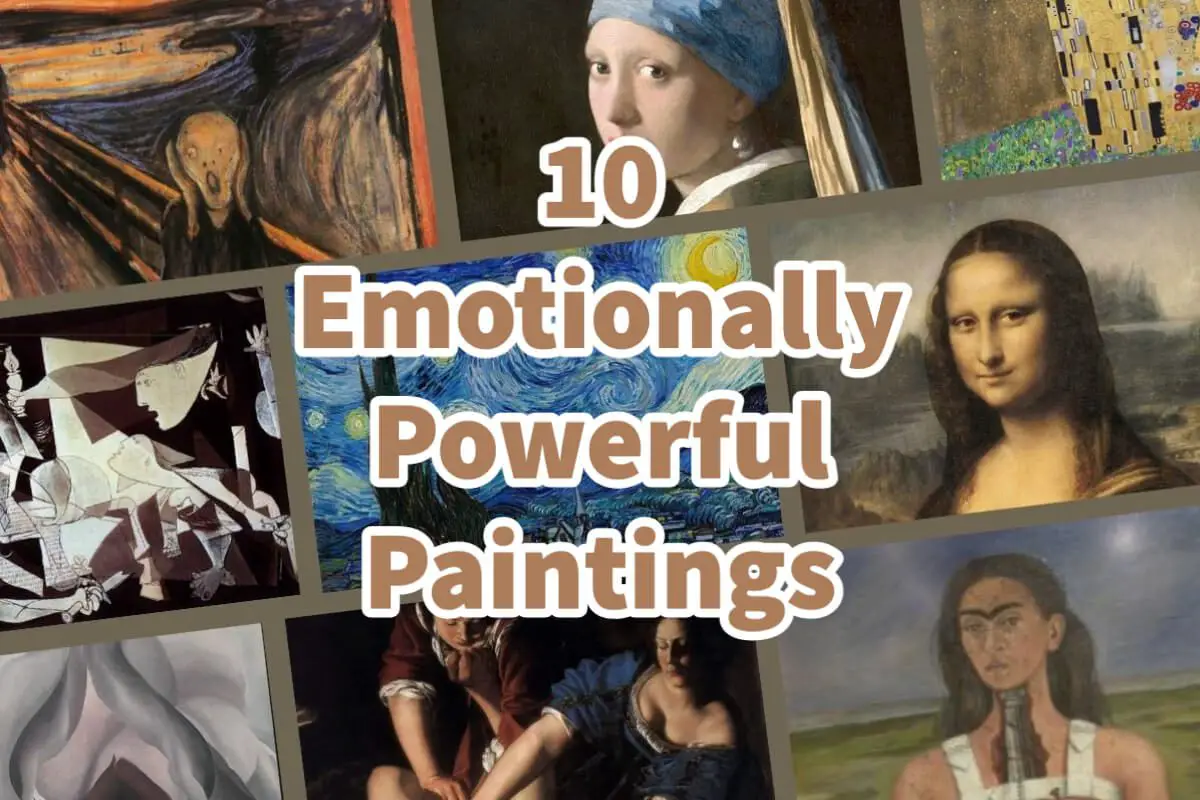When we look at art, it should be something that evokes some meaning or emotion in us. Many of the world’s great artists have created works of art that evoke in us powerful emotions.
Throughout the world, artists have given us many emotional paintings. Whether it was their own emotions, they were feeling, as in The Scream by Edvard Munch, or through a Biblical story as The Prodigal Son By Rembrandt.
Table of Contents
- Our Top 10 Emotionally Powerful Paintings
- The Scream, By Edvard Munch, 1910
- The Starry Night, by Vincent Van Gogh, 1889
- The Kiss, By Gustav Klimt, 1907-08
- Girl With A Pearl Earring, by Johannes Vermeer, 1665
- Black Iris III, By Georgia O’Keeffe, 1926
- The Mona Lisa, by Leonardo da Vinci, 1503 – 1506
- Return of the Prodigal Son, by Rembrandt, 1669
- Guernica, by Pablo Picasso, 1937
- Judith Slaying Holofernes, by Artemisia Gentileschi 1614 to 1618
- The Broken Column, by Frida Kahlo
- The Emotional Depth of Art: 12 Facets of Feeling and Their Significance
- The Enduring Power of Art: 10 Reasons Why It Resonates Through the Ages
- Frequently Asked Questions
- Related Questions
Anita Louise Art has chosen what we feel are ten of the most influential and emotionally charged paintings ever produced.
Our Top 10 Emotionally Powerful Paintings
Our top ten emotionally powerful paintings come from all eras of art and various artists. Many of these paintings are considered masterpieces because they are so emotionally powerful.
The Scream, By Edvard Munch, 1910
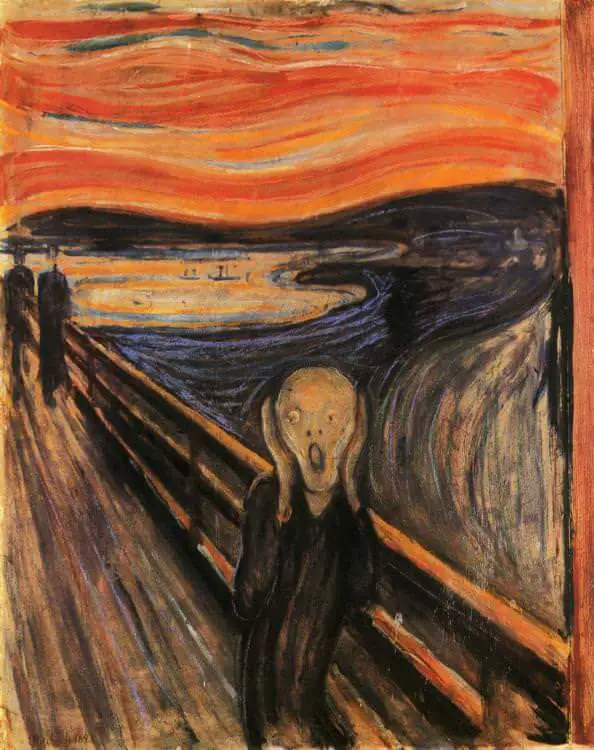
The Scream by Edvard Munch is perhaps one of the most emotionally charged iconic paintings ever created. Munch was known to create several versions of the painting, but the most famous one is his 1910 version.
Munch used vibrant, dreamlike colors in the background and placed a figure in the center, obviously in angst. The painting depicts how many of us can feel anxiety and fear of just being human.
The Starry Night, by Vincent Van Gogh, 1889
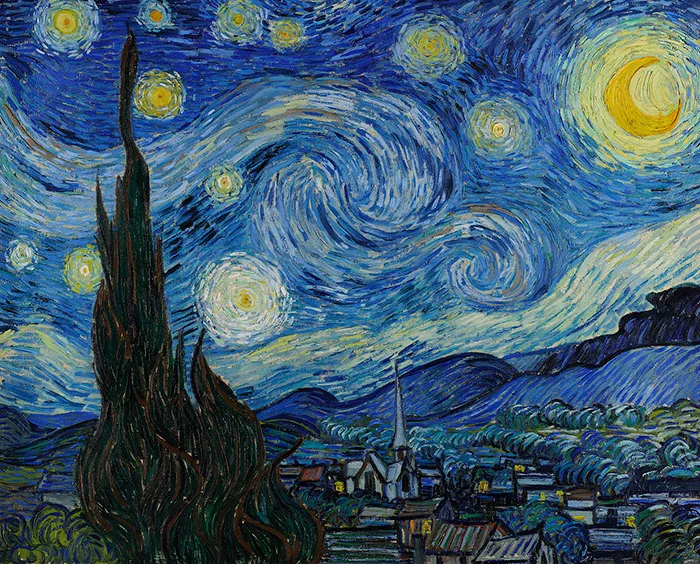
The Starry Night by Vincent Van Gogh is one of the most important paintings by the Post-Impressionist Van Gogh. Van Gogh painted this painting of his nighttime view from the Saint Remy de Provence asylum, where he was for treatment for mental illness.
The Starry Night is one of the most recognized paintings in the world. The way Van Gogh executed the subject matter in The Starry Night with the night sky takes on an emotional feeling. The night sky is rolling with blue swirls against a yellow moon and the stars.
To discover more about The Starry Night, you can read our blog How Much Is Van Gogh’s Starry Night Worth, And Other Facts by clicking here.
The Kiss, By Gustav Klimt, 1907-08
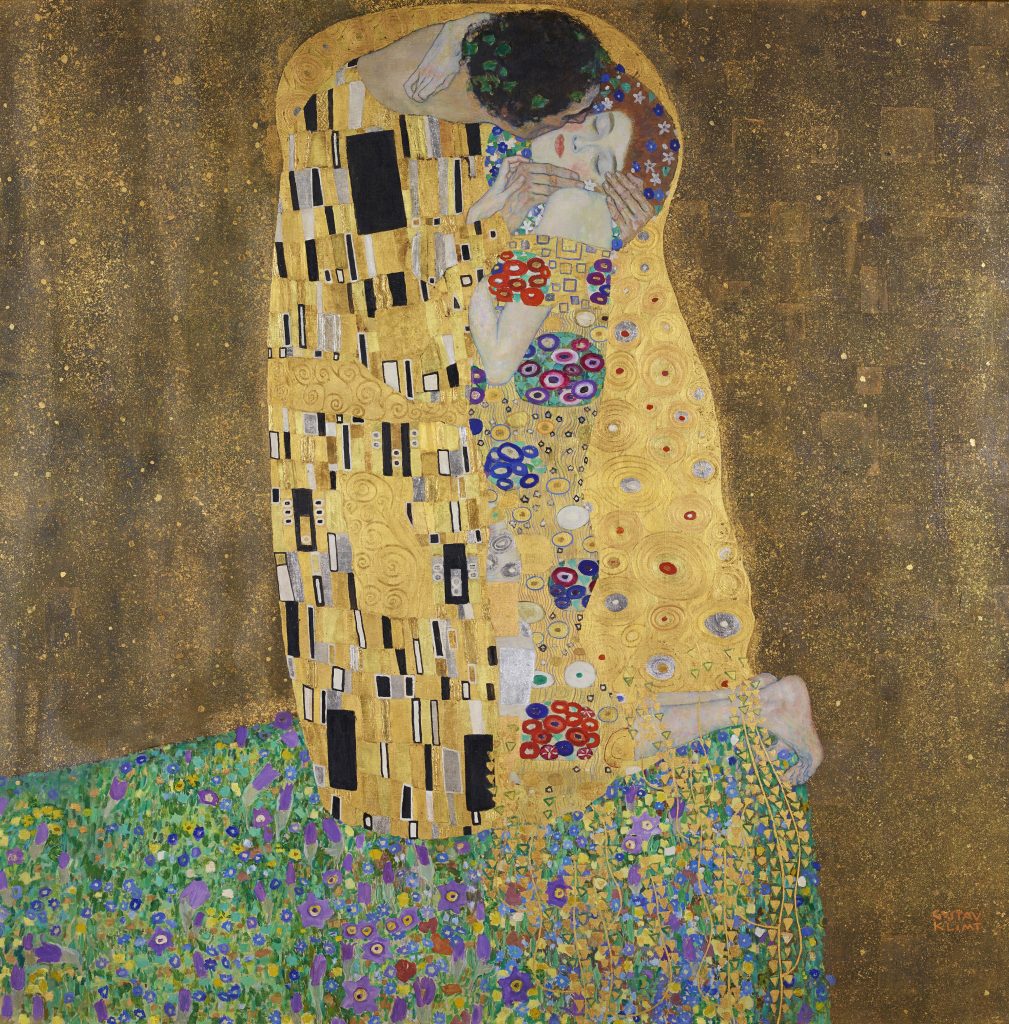
The Kiss by Gustav Klimt is a painting of a man and woman locked in an embrace. The two figures are fused as almost one single person.
This work is fascinating because Klimt painted oil on the canvas but also added gold leaf, silver, and platinum to the painting. Klimt was known to paint many emotionally charged paintings of love, intimacy, and sexuality, but perhaps no painting of his evokes these emotions like The Kiss.
You can learn more about Gustav Klimt by reading our blog Who Was Gustav Klimt Inspired By? by clicking here.
Girl With A Pearl Earring, by Johannes Vermeer, 1665

Girl With A Pearl Earring was painted by the Dutch golden age painter Johannes Vermeer in 1665. The painting depicts a girl wearing an oriental turban and an exotic dress; she appears to have some huge pearl earrings.
The painting of the Girl With A Pearl Earrings has evoked so much emotion over the years that it has inspired poems, movies, and even other paintings by other artists.
Black Iris III, By Georgia O’Keeffe, 1926
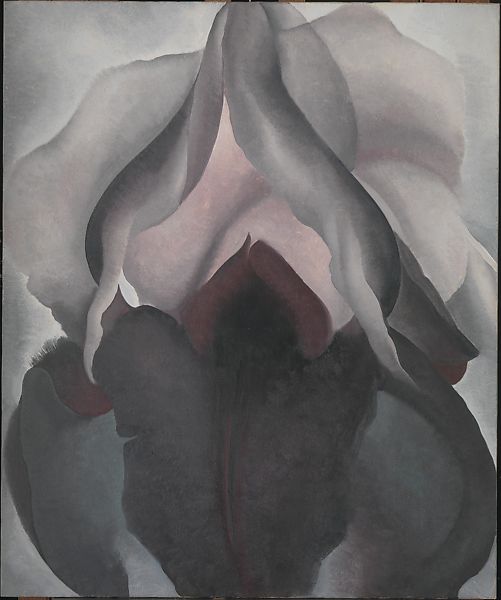
Georgia O’Keeffe is famous for her close-up of large, sensual flowers. She painted them as if we were looking through a magnifying glass.
One of her most popular series was her Black Iris series, specifically Black Iris III. Many consider this to represent a woman’s private parts, even though Keeffe stated it was just a close-up of a flower.
This painting makes it on the list as it evokes so many different emotions for so many different people. Some people see the implication of a woman’s vagina, and others a close-up of a flower.
The Mona Lisa, by Leonardo da Vinci, 1503 – 1506
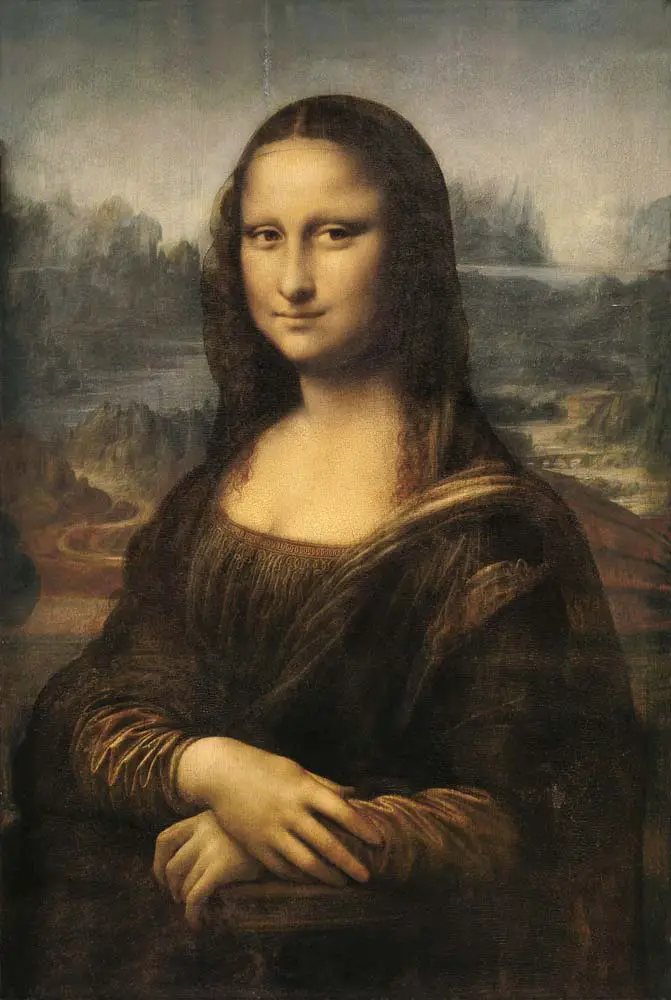
The Mona Lisa by Leonardo da Vinci continues to be the most viewed painting in the world. It has been described as the most considered, written, and sung about painting in the world. Many visitors will visit the Louvre Museum in Paris to catch a glimpse of this iconic artwork.
We do not know who is the Mona Lisa in the painting, but we know that Leonardo da Vinci spent many years working on the image and perfecting the famous Mona Lisa smile.
If you want to learn more about the Mona Lisa, you can read our blog, Mona Lisa Painting And The Paris Louvre Museum, by clicking here.
Return of the Prodigal Son, by Rembrandt, 1669
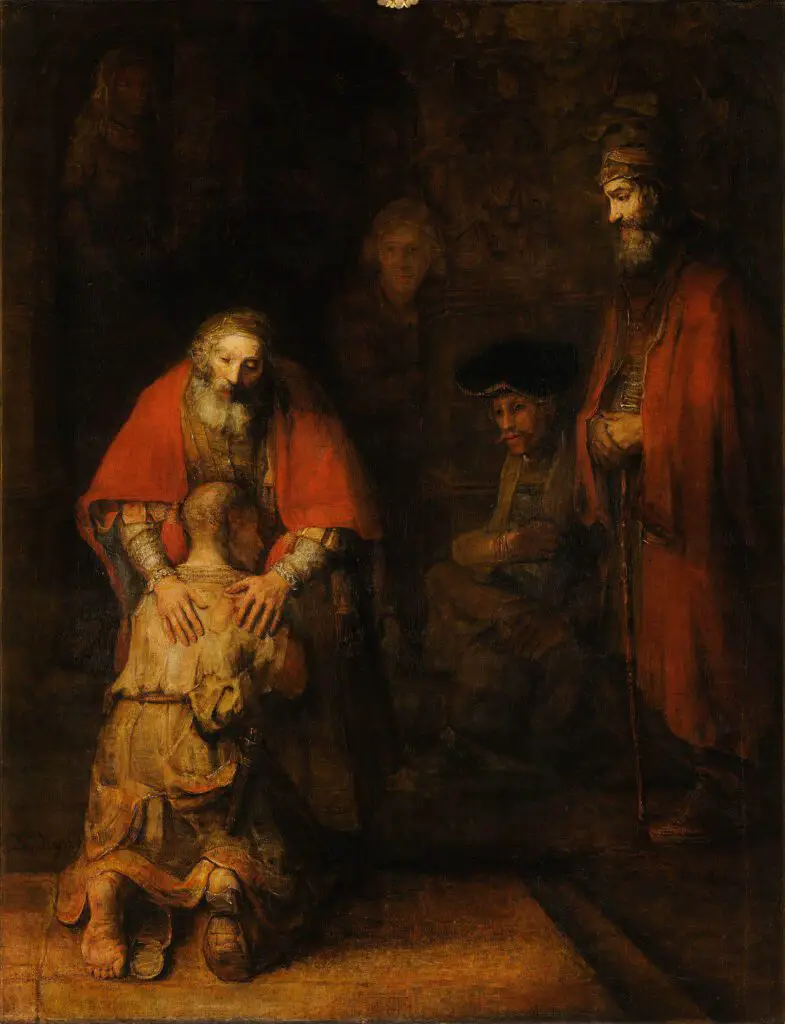
The Return of the Prodigal Son by Rembrandt in 1669 was one of Rembrandt’s final works of art. The painting shows the moment from the Bible parable when the prodigal son returns home to beg forgiveness from his father.
The son is kneeling before his father in poverty and a wretched state as he has spent years wasting his inheritance, life, and money. The son realized that even his father’s servants had a much better life than he had.
Rembrandt gives us a thought-provoking and emotional charge painting that shows forgiveness’s power.
Guernica, by Pablo Picasso, 1937
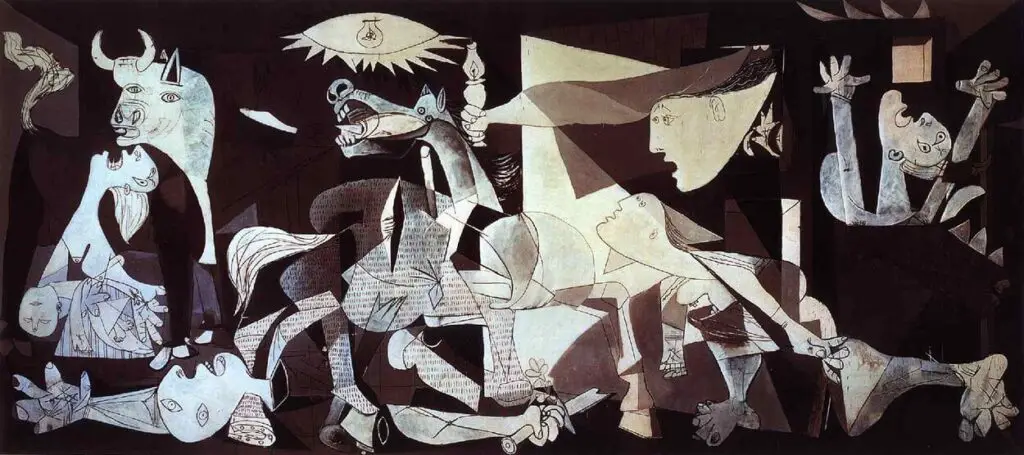
Guernica by Pablo Picasso is one of his more important and well-known works of art. It is a large oil on canvas produced in black and white.
Guernica is considered one of the most potent anti-war paintings ever produced. The painting portrays the suffering, violence, and chaos of war. The painting was based on the 26 April 1937 bombing of Guernica, Spain, where many people died from this act of war.
To discover more about Pablo Picasso, you can read Differences Between Leonardo da Vinci And Pablo Picasso by clicking here.
Judith Slaying Holofernes, by Artemisia Gentileschi 1614 to 1618
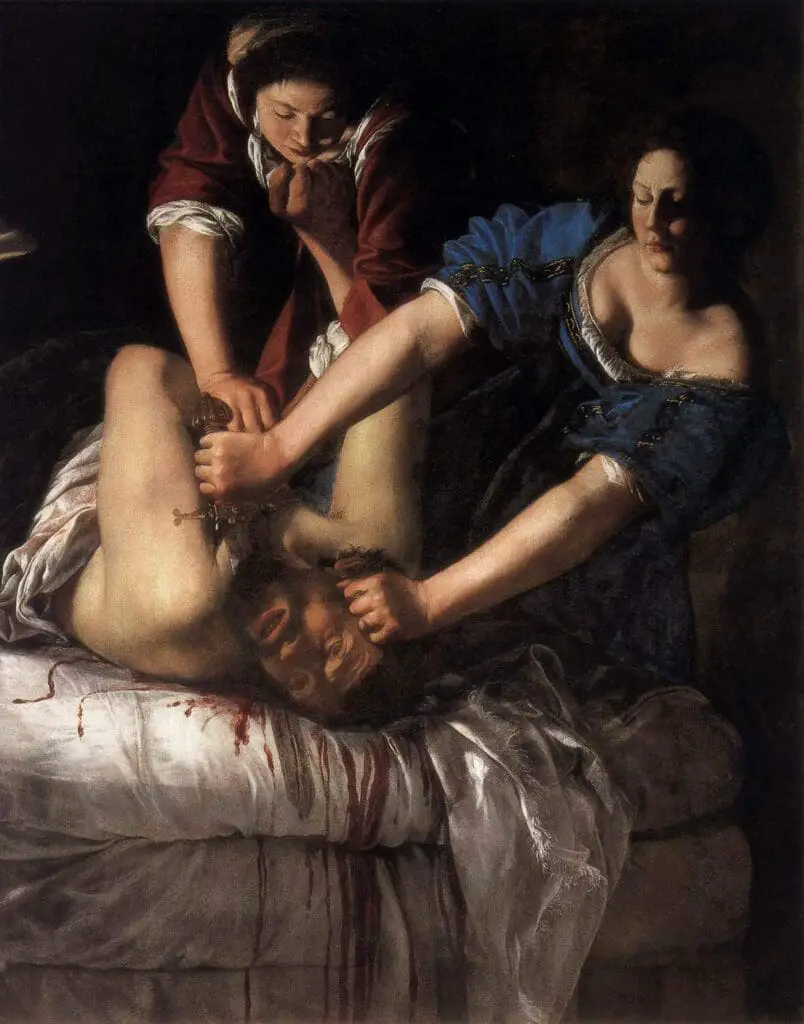
Judith Slaying Holofernes by Artemisia Gentileschi is sometimes called ”Judith Decapitating Holofernes.” Gentileschi expertly shows us the act of these two women slaying General Holofernes.
Judith was a well-known widow in Bethulia, where her city was at war with the Assyrian army and was close to surrendering. She pretended to be on General Holofernes’s side of the battle to gain access to him so she could kill him and save her people and city from ruin.
You can learn more about this painting by reading Artemisia Gentileschi’s Major Works Of Art by clicking here.
The Broken Column, by Frida Kahlo
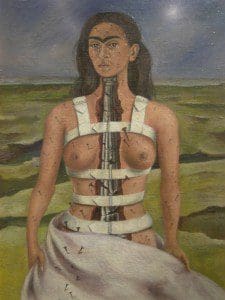
The Broken Column by Frida Kahlo is not her best-known painting, but it is one of the most thought-provoking. Due to a road accident Frida Kahlo had when she was young, she suffered pain her entire life.
Frida Kahlos’ art focuses on her pain and suffering, and this painting with the metal corset symbolizes her pain and the physical and social restrictions she had in her life and living. She painted herself alone on a cracked and barren landscape also shows her feeling of being emotionally isolated.
You can discover more about Frida Kahlo by reading Who Was the Mexican Artist Frida Kahlo (1907-1954)? by clicking here.
The Emotional Depth of Art: 12 Facets of Feeling and Their Significance
Art has always been an intrinsic part of human civilization, serving as a visual treat and an emotional catalyst. Its depth lies in its ability to evoke, represent, and communicate feelings.
Let’s explore 12 ways art is intertwined with emotion and delve into the significance of this connection:
- Expression of the Artist’s Emotions: Artists often pour their feelings into their creations. A piece can embody their joy, sorrow, frustration, or tranquility, granting viewers a window into their souls.
- Elicitation of Viewer Emotions: Art can invoke emotions in its beholders. A painting or sculpture might stir feelings of nostalgia, sadness, joy, or introspection in different viewers.
- Therapeutic Outlet: For many, creating art serves as an emotional release. It provides an avenue to process feelings, leading to therapeutic benefits and mental well-being.
- Tells Emotional Stories: Through art, complex narratives of love, loss, hope, and conflict are conveyed, allowing artists to share stories that resonate with our shared human experience.
- Connects Across Boundaries: Art transcends language, culture, and time. The emotions embedded within it enable people from diverse backgrounds to connect and find common ground.
- Chronicles Societal Emotions: Art often captures the emotional zeitgeist of a period, mirroring society’s feelings, concerns, and reactions to events.
- Emotional Evolution: By studying art from various eras, we can trace the emotional evolution of humanity, understanding how sentiments and expressions have transformed over time.
- Empathy Cultivation: Engaging with art allows viewers to step into another’s emotional shoes, fostering empathy and a deeper understanding of diverse experiences and perspectives.
- Invites Introspection: Art encourages viewers to delve deep into their feelings. Reflecting on one’s emotional reaction to a piece can lead to personal insights and self-awareness.
- Facilitates Emotional Conversations: Art provides a medium to discuss difficult or taboo emotions. It can catalyze discussions about topics like mental health, grief, or societal issues, promoting understanding and openness.
- Emotion in Physicality: The physical process of creating, be it the aggressive brush strokes or the delicate molding of clay, embodies the artist’s emotional state, making the artwork a tangible manifestation of feelings.
- Memorialization of Emotion: Art immortalizes emotions. A piece capturing a moment of joy, pain, or wonder ensures that the sentiment endures long after the original moment has passed.
The Significance of Emotion in Art
Emotions are the essence of our humanity. They shape our experiences, actions, and interactions. By weaving emotions into art, we immortalize our human experience, ensuring that our feelings, stories, and insights are communicated and preserved across generations.
The emotional depth of art enriches our lives, fosters connections, and serves as a testament to the profound depths and heights of human emotion. In its myriad forms, art reminds us of the beauty, pain, complexity, and universality of what it means to feel truly.
The Enduring Power of Art: 10 Reasons Why It Resonates Through the Ages
Art, in its myriad forms, has been a constant companion to humanity through millennia. From cave paintings to digital masterpieces, art has always held a mirror to society, reflecting its joys, sorrows, aspirations, and challenges.
But what gives art its enduring and universal appeal? Here are ten reasons why art has been and continues to be, a potent medium across the ages:
- Universal Language: Art transcends linguistic, cultural, and geographical barriers. A painting, sculpture, or musical piece can evoke emotions and convey ideas to anyone, irrespective of their background.
- Expression of Emotion: Art provides a safe haven for expressing the deepest of emotions – joy, despair, anger, love – allowing both the creator and the viewer a cathartic experience.
- Historical Record: Throughout history, art has documented events, lifestyles, and societal norms. It acts as a visual (or auditory) record, capturing moments in time for future generations.
- Catalyst for Change: Art can be revolutionary. It has the power to challenge the status quo, question societal norms, and instigate change, whether through street graffiti or protest songs.
- Therapeutic Value: The process of creating or even viewing art has therapeutic properties. Art therapy is a testament to its healing power, helping individuals cope with trauma, stress, and mental health issues.
- Enhances Empathy: A poignant novel, film, or painting can make us step into another’s shoes, fostering understanding and empathy for diverse experiences and perspectives.
- Cultural Identity: Art preserves and propagates cultural narratives, ensuring that traditions, stories, and practices are passed down and celebrated across generations.
- Stimulates Imagination: From surreal paintings to fantastical literature, art encourages us to dream, imagine, and think outside the box, fueling creativity and innovation.
- Economic Impact: Art plays a significant economic role beyond its intangible value. The global art market, cultural tourism, and industries like cinema and music contribute billions to the world economy.
- Community Building: Art festivals, galleries, theaters, and concerts are communal spaces where people come together, fostering a sense of community and shared experiences.
Listen To Our Podcast About Unveiling Emotion Through Brushstrokes – Exploring 10 Emotionally Powerful Paintings Below or By clicking here.
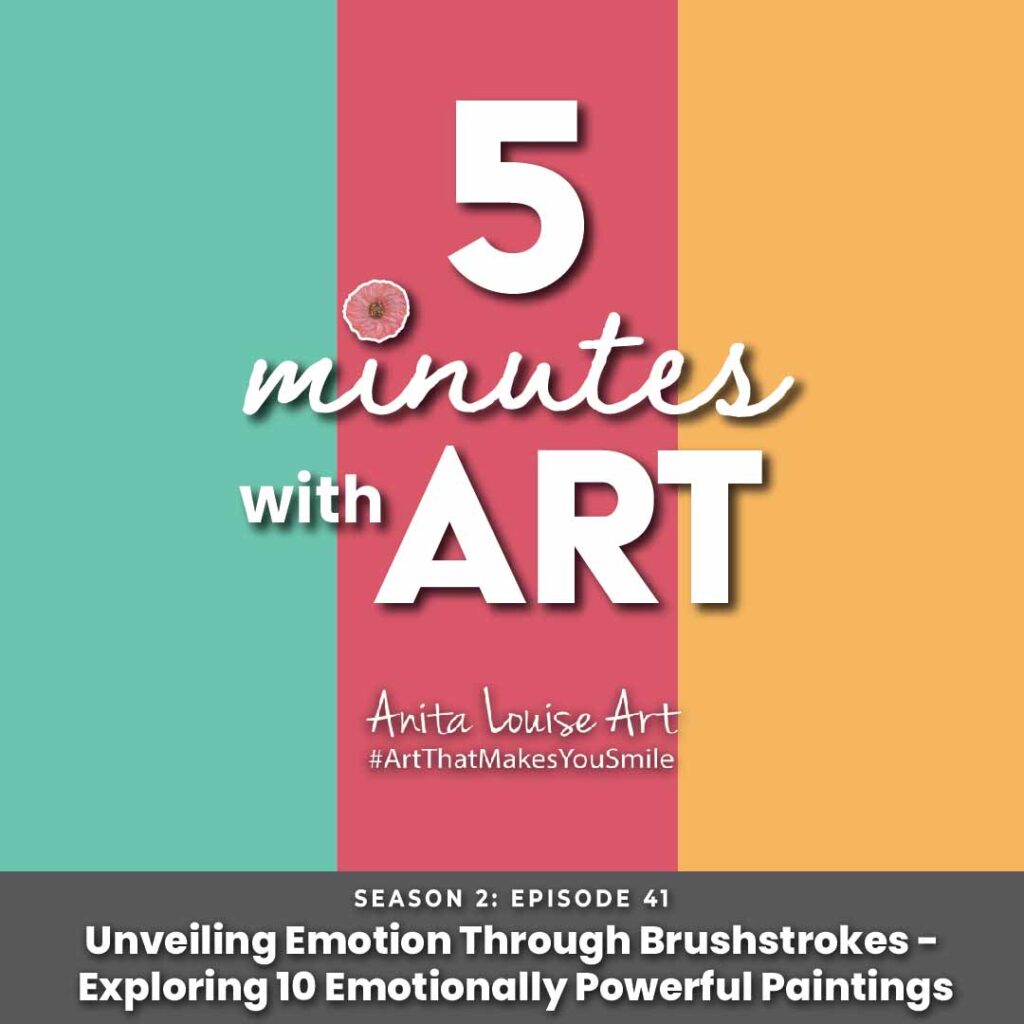
Art is not just a luxury or pastime – it’s a fundamental aspect of the human experience. It reflects our past, shapes our present, and influences our future. The enduring power of art lies in its ability to communicate, inspire, challenge, and connect, making it as relevant today as it was to our ancestors thousands of years ago.
Anita Louise Art is dedicated to art education, great artists, and inspiring others to find and create their art. We love art that uplifts and inspires. #ArtToMakeYouSmile! #ArtToMakeYouHappy!
If you want to see any of my art, you can find out more by clicking here. If you are interested in what inspires me and my paintings, you can discover more by clicking here.
We have a free newsletter and would love you to be part of our community; you can subscribe to the newsletter by clicking here. If you have any questions, I would be happy to talk to you. You can reach me, Anita, by clicking here.
Subscribe to our Anita Louise Art YouTube Channel filled with great videos and information by clicking here.
Join us for our podcast “5 Minutes With Art.” Spend just 5 minutes a week with us to discover and learn about great art and artists. You can find out more about our podcast by clicking here.
Frequently Asked Questions
What is meaningful art that shows emotion?
Meaningful art that shows emotion is art that conveys a strong emotional message to the viewer. It can evoke feelings of joy, sadness, anger, or love, and is often created with the intention of eliciting an emotional response from the viewer
What are some examples of emotionalism art?
Some examples of emotionalism art include Vincent van Gogh’s The Starry Night, Edvard Munch’s The Scream, and Jackson Pollock’s Blue Poles. These works all convey strong emotional messages to the viewer through their use of color, form, and expression.
How does art evoke emotion?
Art evokes emotion through its use of color, form, composition, and subject matter. It can use bright, vivid colors to create a sense of joy and happiness, or dark, muted colors to convey sadness and despair. The composition of the artwork can also play a role in evoking emotion, such as the use of diagonal lines to create a sense of tension or the use of symmetry to create a sense of balance and harmony.
What are some characteristics of emotional paintings?
Some characteristics of emotional paintings include the use of bold, expressive brushstrokes, the use of bright or muted colors to convey emotion, and the use of strong compositions that create a sense of tension or balance. Emotional paintings often focus on the human experience and convey feelings of joy, sorrow, love, or anger.
How do emotional paintings differ from other types of art?
Emotional paintings differ from other types of art in their focus on conveying a strong emotional message to the viewer. While other types of art may focus on other aspects, such as composition or form, emotional paintings are primarily concerned with eliciting an emotional response from the viewer.
What is the purpose of art that evokes emotion?
The purpose of art that evokes emotion is to create a strong emotional response in the viewer. It can help us to connect with our own emotions and feelings, and can create a sense of empathy and understanding with others.
How can emotional paintings be interpreted?
Emotional paintings can be interpreted in many ways, as they often convey different emotions to different viewers. Some may see a painting as expressing joy, while others may interpret it as expressing sadness. The interpretation of an emotional painting often depends on the viewer’s own experiences and emotions.
What are some benefits of creating emotional art?
Some benefits of creating emotional art include the ability to connect with others on an emotional level, the ability to create a sense of empathy and understanding, and the ability to express complex emotions that may be difficult to put into words.
How do emotional paintings influence art movements?
Emotional paintings have influenced art movements by creating new forms of expression and pushing the boundaries of what is considered art. They have inspired new artistic movements, such as Expressionism and Abstract Expressionism, and have helped to shape the cultural and intellectual landscape of art.
What are some techniques used in emotional paintings?
Some techniques used in emotional paintings include the use of bold, expressive brushstrokes, the use of color to convey emotion, and the use of composition to create a sense of tension or balance. Emotional paintings may also use symbolism and metaphor to convey complex emotions and ideas
Related Questions
Why Do People Say, ”Life Is Like Drawing Without An Eraser?
Many times, artists, myself included, will use an eraser to remove any marks or measurements we may have made on a paper to measure out and organize their drawings or artwork on their canvas or paper. For most artists having a good eraser is essential.
By clicking here, you can learn more by reading Why Do People Say, ”Life Is Like Drawing Without An Eraser?.
Is Communism Good For The Arts?
Communism is not suitable for art and for many artists under Communism the art should have a purpose and way to help further the communist ideals and ideology. In a Communist society, many artists are labeled as dissidents; others are forced to use their talents to create propaganda art.
By clicking here, you can learn more by reading Is Communism Good For The Arts?.
12 Years Leonardo Painted Mona Lisa’s Lips, Facts Or Fiction?
There is no evidence to show that Leonardo da Vinci spent 12 years painting the Mona Lisa smile. Most scholars believe that he painted the painting in 4 years but then had the painting much longer in his possession. He could have worked on it a bit or adjusted it when he had it in his possession, but there is no evidence to show that.
By clicking here, you can learn more by reading 12 Years Leonardo Painted Mona Lisa’s Lips, Facts Or Fiction?.

